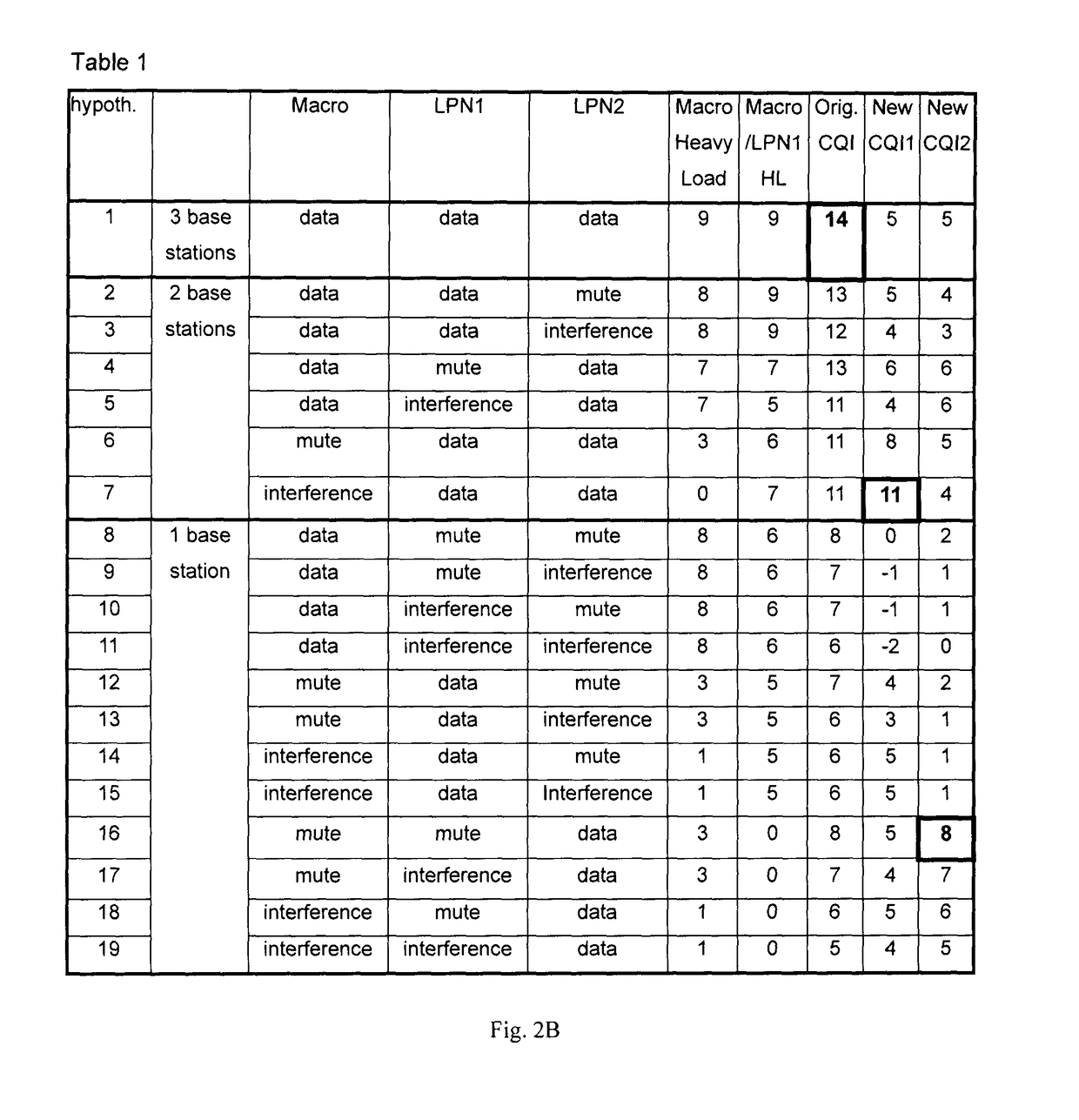Method for determining channel quality indicator, base station and user equipment therefor
a channel quality indicator and channel quality technology, applied in the direction of signalling characterisation, site diversity, baseband system details, etc., can solve the problems of large macro load, inefficient use of lpns spectral resources, and the inability to select cqi accurately, so as to achieve the effect of fixing the performance loss
- Summary
- Abstract
- Description
- Claims
- Application Information
AI Technical Summary
Benefits of technology
Problems solved by technology
Method used
Image
Examples
first embodiment
[0022]A method of dynamically determining Channel Quality Indicators (CQI) to be reported by User Equipments (UE) is described in the present embodiment. According to this method, the UE calculates original CQIs according to CQI calculation hypotheses corresponding to various base station cooperations; adjusts the original CQIs based on adjustment factors indicated by the base station; and report the proper CQIs. Through this method, when the adjustment factors reflects the load conditions at base stations, the UE can report CQIs by taking into account the traffic load conditions as indicated by the base station. Therefore, the traffic offloading is enabled and the defect of performance loss can be avoided.
[0023]FIG. 2A is a diagram showing a flow chart of a method of dynamically determining CQIs to be reported according to the first embodiment of the present disclosure. In the following, the method will be described in detail with reference to FIG. 2A, taking a macro and two LPNs (...
second embodiment
[0033]The first embodiment is described above by taking the CQI reduction value as an example of the adjust factor. In fact, the adjust factor can be any other types of value, such as weighting coefficient. For example, if the macro is heavily loaded, while LPN1 and LPN2 are lightly loaded, the base station cooperations that the macro transmits data therein may be configured with a small weighting coefficient. And the more heavily the macro is loaded, the smaller weighting coefficient may be assigned to the related base station cooperation. In this instance, in step 24, the UE adjusts the original CQIs by multiplying each original CQI by a corresponding weighting coefficient. The operations in other steps are the same with those in the first embodiment, and thus will not be described repeatedly herein.
third embodiment
[0034]The method of the present embodiment is substantially the same as that of the first embodiment, except that the base station transmits to UEs multiple sequences of adjustment factors. Each sequence may correspond to different load conditions. Specifically, in the first embodiment, a sequence of adjustment factors is assigned to various possible base station cooperations, while in the present embodiment, multiple sequences, for example two sequences, of adjustment factors are assigned to various possible base station cooperations, wherein one sequence corresponds to the macro heavily loaded, and another one corresponds to the macro lightly loaded. The two sequences may have some common part, and thus in step 22, possibly only the first sequence and the different parts of the second sequence will be transmitted to UEs. In step 24, the UE adjusts the original CQIs based on said two sequences of adjustment factors respectively. Then, in step 25, the UE reports one highest CQI with...
PUM
 Login to View More
Login to View More Abstract
Description
Claims
Application Information
 Login to View More
Login to View More - R&D
- Intellectual Property
- Life Sciences
- Materials
- Tech Scout
- Unparalleled Data Quality
- Higher Quality Content
- 60% Fewer Hallucinations
Browse by: Latest US Patents, China's latest patents, Technical Efficacy Thesaurus, Application Domain, Technology Topic, Popular Technical Reports.
© 2025 PatSnap. All rights reserved.Legal|Privacy policy|Modern Slavery Act Transparency Statement|Sitemap|About US| Contact US: help@patsnap.com



